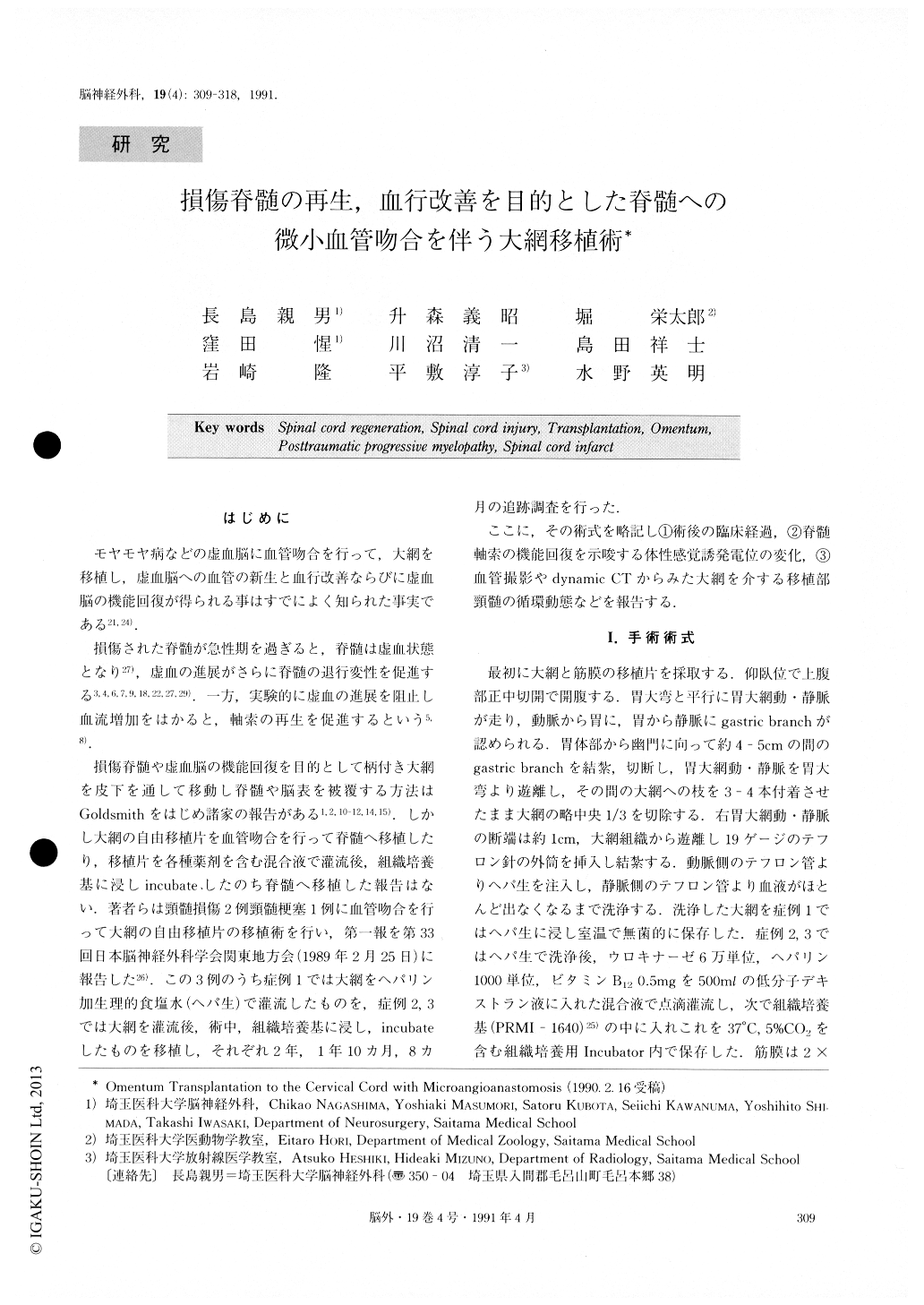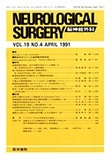Japanese
English
- 有料閲覧
- Abstract 文献概要
- 1ページ目 Look Inside
はじめに
モヤモヤ病などの虚血脳に血管吻合を行って,大網を移植し,虚血脳への血管の新生と血行改善ならびに虚血脳の機能回復が得られる事はすでによく知られた事実である21,24).
損傷された脊髄が急性期を過ぎると,脊髄は虚血状態となり27),虚血の進展がさらに脊髄の退行変性を促進する3,4,6,7,9,18,22,27,29).一方,実験的に虚血の進展を阻止し血流増加をはかると,軸索の再生を促進するという5,8).
Abstract
Transplantation of omentum to the cervical cord was done in three cases with incomplete transection (Case 1) with posttraumatic progressing cervical myelopathy (Case 2) and with complete transection due to multi-segmental, late cervical cord infarction (Case 3) . Ana-stomoses were made between the occipital artery and the gastroepiploic artery of transplanting omentum and between the occipital vein and the gastroepiploic vein.In Case 2 and 3, omentum was maintained in tissue cul-ture medium in an incubator (37°C, 5% CO2) for about five hours following perfusion of the omentum with low molecular dextran containing urokinase, heparin, vitamin B12 until exploration of the dural tube and pre-paration of the occipital vessels were accomplished. Although complete transection with late infarct (Case 3) showed extremely slow improvement in follow-up period of 8 months, the incomplete traumatic lesions (Case 1 and 2) showed less slow but steady improve-ments in follow-up periods of 24 and 22 months with almost complete recovery of Case 2. Angiography showed patent anastomosis in all the cases. Dynamic CT at 4 (Case 1) and 6 (Case 2) months showed good perfusion in the compromised cord through the trans-planted omentum.

Copyright © 1991, Igaku-Shoin Ltd. All rights reserved.


